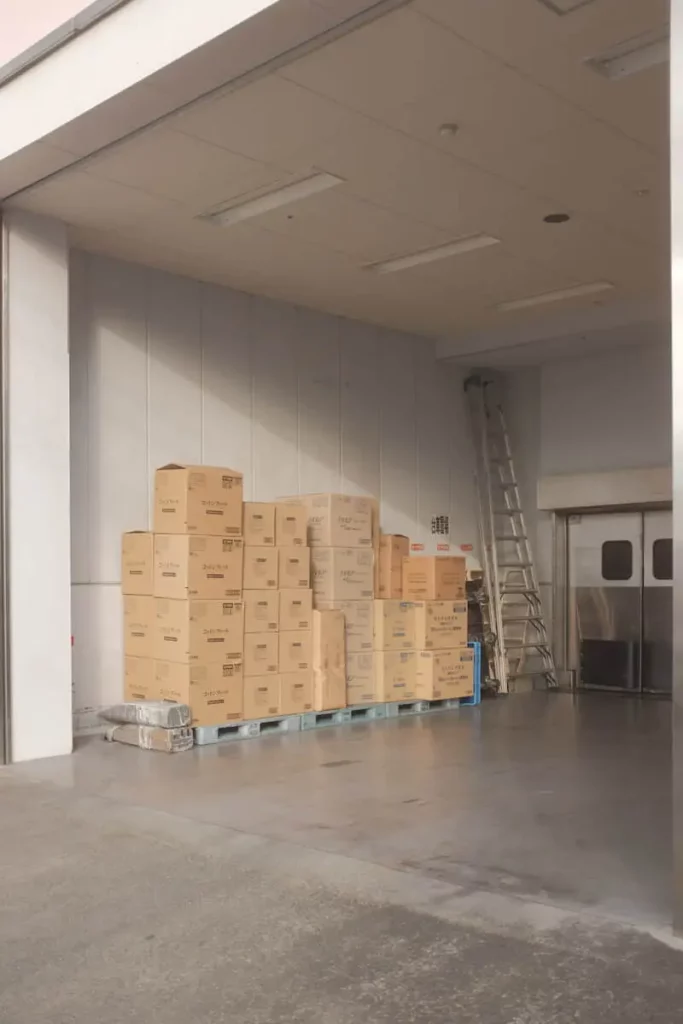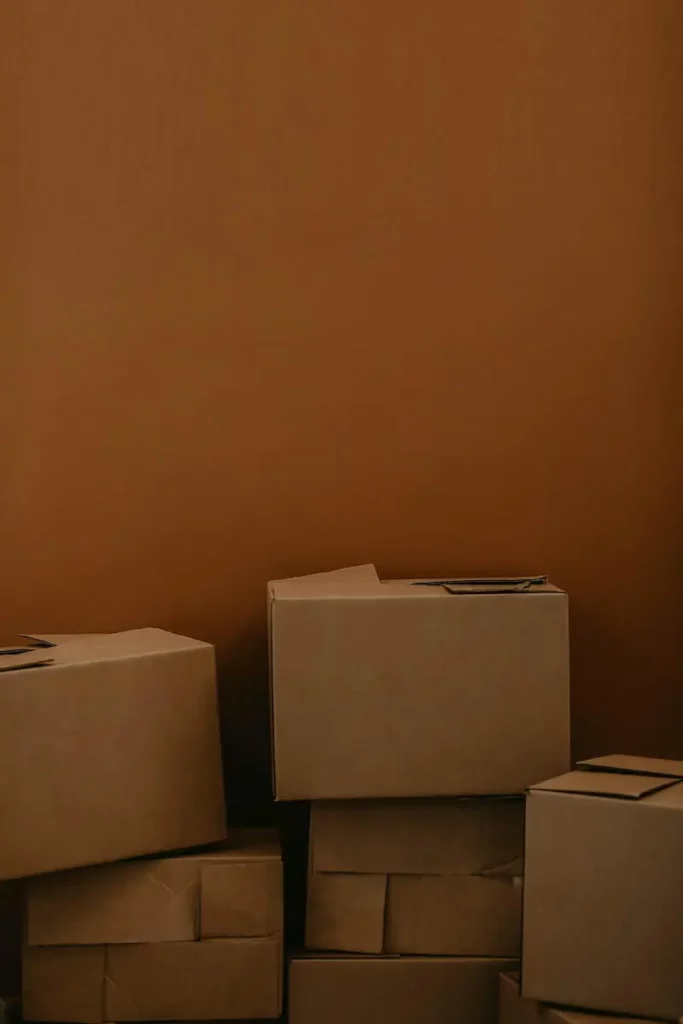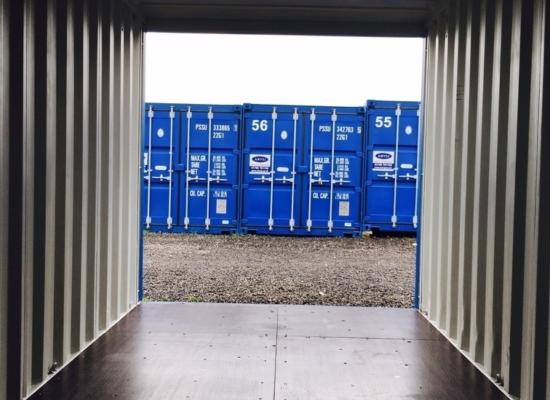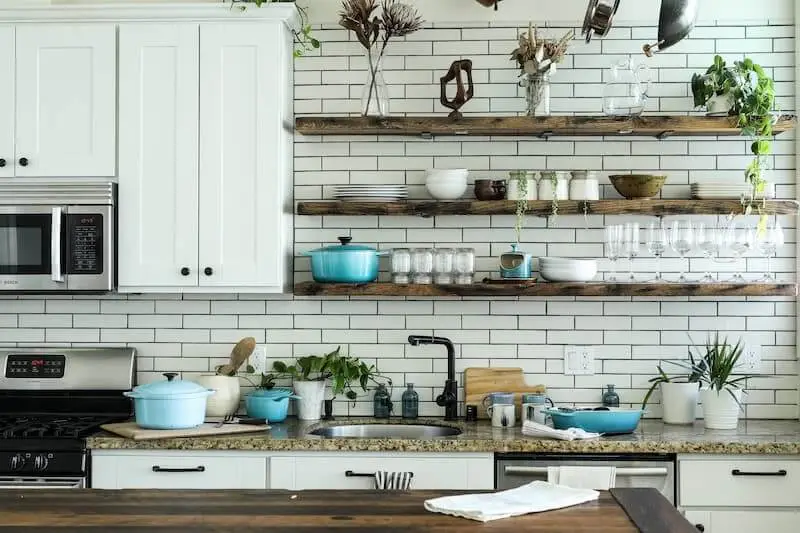Having extra space available at home to use for storage can be a luxury, especially in smaller homes like flats. Over time, people tend to start amassing more things within their homes, and when floor space is at a premium, this can start to clutter your home quickly. Opting to use a self-storage unit can be a great way to free up your home. But depending on the storage unit you get, this can be expensive.
This article will go over some tips you can use to make the most out of a self-storage unit, while also keeping your costs to a minimum.
How to Save Money on Self-Storage
To save money when using self-storage, be sure to measure the items ahead of time that you want to store, as this will give you a rough estimate of the space required, and therefore means you can choose the smallest unit that will fit your belongings in. Additionally, opting to choose a self-storage unit away from city centres also reduces the costs involved.
Rent a Small Storage Unit
When trying to save money on a self-storage unit, it makes sense that opting to go for the smallest unit you can, while still having the room you need, is the first thing you should consider. It goes without saying that the bigger the storage unit, the more expensive it will be to rent. It can be tricky to balance getting the cheapest unit you can afford, while still having enough space to store your belongings, however, there are some tips and tricks you can start to use to make the most of a small storage unit.
Measure How Much Space You’ll Need
It can be hard to visualise just how much space you will need in a storage unit, too big a storage unit wastes money, and too small means not having enough space to store everything you want.
To try and avoid this situation, measure the items you want to store, as this will help to give you a rough idea of how much space you’ll need. You’ll need to measure the width and depth of an item, and then times the two numbers together, this will give you the surface area of your item.
For example: If you have a box that is 1 m x 1 m (100 cm x 100 cm), the surface area will be 1 m2 or, 10000 cm2. The smallest storage unit we offer is around 74000 cm2 (7.4 m2) , and has a height of 2.27 m. This means you could fit around 14 of the boxes we measured in this storage unit, with a bit of spare room leftover.
To give some ‘real world’ context to the numbers, 7.4 m2 is typically enough space for the contents of a standard 1-bedroom flat.
It’s worth noting that depending on the storage unit you get, the height may be different, which is something to keep in mind if you have bulky items, like a wardrobe, to store. As a point of reference, our small storage units have a height of 2.27 m, which is typically more than enough for most furniture.
Be Smart with Your Packing
One of the best ways to keep costs down is to rent a small storage unit. To help ensure you can fit as much as you can within your self-storage unit, you’ll have to be smart with how you pack and position your belongings.

- Start with the biggest items you have to store, as it will be much easier to position your smaller items around them, rather than the other way around.
- Try to be as efficient with space as possible, try not to leave big gaps between items if possible – all the gaps when added up could be the space for another item.
- Use vertical space if possible. This could be through stacking boxes, or placing items on top of big furniture such as a set of drawers or a wardrobe. People often waste space by not utilising verticality.
- Use space-saving hacks like storing clothes in vacuum-sealed bags, which can massively reduce the space needed to store them.
If you’re unsure about what size self-storage unit you’ll need, then be sure to ask your provider. A good storage unit provider will be able to advise you on what the best storage unit to rent is, based on your needs.
Be Flexible in Your Location
Like with most things, location can impact a small storage unit’s cost. Being in a higher-demand area, or being closer to a city centre, will mean it will be more expensive when looking for a self-storage unit to rent. Opting to go a little further afield, away from the city centres, will help to save money on your self-storage unit.
One thing to consider is how you’re transporting your belongings to your storage unit. There is no point in getting a self-storage unit that is cheaper, but too far away for you to easily travel to and access. However, if you have the means to transport your things to a unit that’s further away, you’ll be able to save a good amount of money.
While being a bit more expensive, choosing to use a small storage unit closer to a city centre may be the best storage option for students, or if you’re living in a city like London and don’t have a car.
It is always worth checking ahead of time if the storage unit provider you have in mind has the right self-storage unit available, in the right location for you, when you need it.
Share a Self-Storage Unit
Even when deciding to go for a small storage unit, you still might have enough belongings that you need to store to fill the unit. If this is the case, which you can roughly figure out ahead of time by measuring as we mentioned earlier, you can always share your storage unit with a friend or family member.
Sharing a self-storage unit is a great way to reduce the costs involved with storing your belongings, particularly if you don’t have too many items. Sharing a unit with one other person will cut the weekly price of the unit in half, making it much more affordable.
When doing this, it’s worth bearing in mind that you’ll have to organise who has the keys to the unit, and make sure they’re handed over to the person who needs them. You don’t want to be caught in a situation where you need to access your self-storage unit but can’t if the keyholder is away.
Finding a friend or family member who already has a storage unit can be a cost-effective way to temporarily gain additional storage if you’d only need the storage for a short amount of time. This can be useful if you need a bit more storage room while moving house.
Save Money on Packing Boxes
When it comes to packing items to go in your self-storage unit, boxes are usually the best option. They make carrying multiple items easier, are easy to label/organise, and can be stacked and placed for maximum space efficiency.
But just because boxes are the best option, it doesn’t mean you need to pay a premium for them. There are some easy ways you can save a bit of money on any boxes you might need.

Ask Friends and Family
Before buying boxes of your own, it’s always good to ask your friends and family if they have any boxes that are suitable for moving. Someone may have moved recently or kept their boxes in a garage or loft from a previous move, just in case they need them. In an ideal world, this might supply you with all the boxes you need for free, which can be a huge money saver, depending on how many boxes you need.
Ask Supermarkets and Shops
Another great way to get free boxes for packing is by asking shops or supermarkets. These shops will regularly receive huge deliveries, which typically come in a lot of varying-sized boxes. It might seem a little strange, but asking the staff if they have any boxes you can have is a great way to save some money. Depending on how lucky you get, there might be plenty to choose from, plus you’ll save an employee from having to break them down and throw them in the recycling bin, so you’ll be doing them a favour too.
Save Any Moving Boxes
If possible, after moving homes, try and keep a few of the stronger and bigger boxes if you have room for them. While this won’t help you save money now, you’ll be thanking your past self when it comes to needing boxes to use for packing/storing later on. Be sure to keep the boxes in a safe and dry place to reduce the chance of them getting damp or damaged over time.
With any older boxes, whether self-stored or second-hand, be sure to check the integrity of the boxes before using them for packing and storing your belongings. The last thing you want is the bottom to rip or fall out when you’re mid-unloading into your self-storage unit.
Check The Notice Periods
Some providers will have a notice period in place for their self-storage units so you have to give them a minimum time frame when letting them know you are leaving. This period can differ depending on the provider and service.
We recommend before renting a small storage unit, that you check what the notice period is, so you’re not hit with a nasty surprise and end up paying for a few more weeks of storage unit use without actually needing it. Once you know the notice period, write it down so that you won’t forget it, as you might not be leaving for months depending on your circumstances.
Conclusion
Using a self-storage unit on a tighter budget is possible, but requires some proactive planning and organisation before renting a unit. Maximising the use of a small storage unit, by measuring ahead of time, mixed with some clever packing, will save you the most money. It is also worth factoring in the location of the storage unit provider, as being closer to a high-demand area like a city centre will be more expensive.
Looking For Cheap Self-Storage?
If you’re looking for budget-friendly small storage units, we offer self-storage units that are available across multiple locations, and at great prices that won’t break the bank.
All of our storage unit sizes come with both measurements and real-world examples of what you can fit in them, so you don’t have to struggle with visualising how much a certain square meterage is.
If you need any help with choosing the right-sized storage unit or have any questions at all, don’t be afraid to get in touch. Our team of friendly experts will be able to advise you on the best self-storage solution for you.
Frequently Asked Questions
What is the cheapest storage option?
The cheapest way to store your own items you don’t have room for at home is to rent the smallest self-storage unit you can and be efficient with how you use the space. Be sure to use the vertical space, not the horizontal, so you’re not wasting space you’ve paid for. Ideally, the storage unit will be away from high-demand areas like city centres. Additionally, sharing a storage space with a friend or family member will dramatically reduce the cost.
How much is a small storage unit?
Our smallest storage unit is 80 ft2 or 7.4 m2 and starts from £17.30 per week. A self-storage unit of this size will typically be enough for the contents of a 1-bedroom flat or house, which is roughly about 150 medium-sized boxes. This can be a great option if you’re looking to move house from a flat or uni accommodation and need a little extra room to store belongings while you move.








